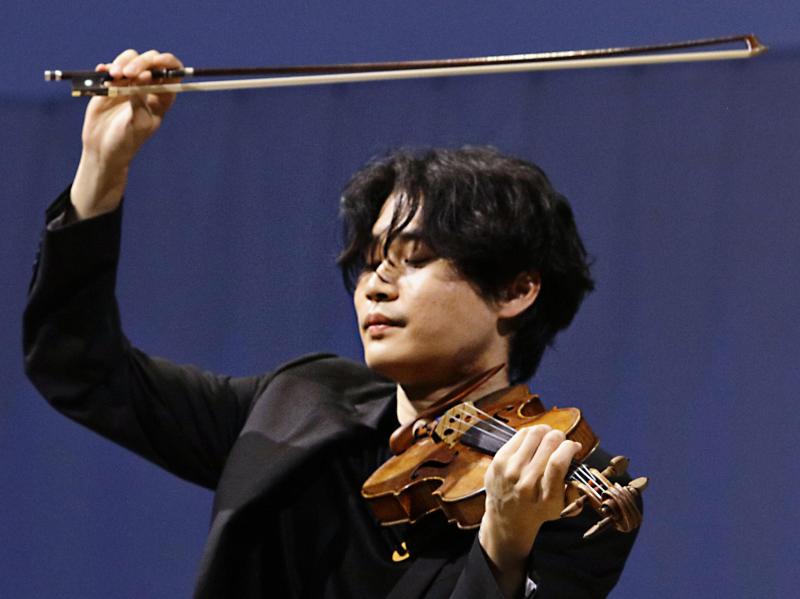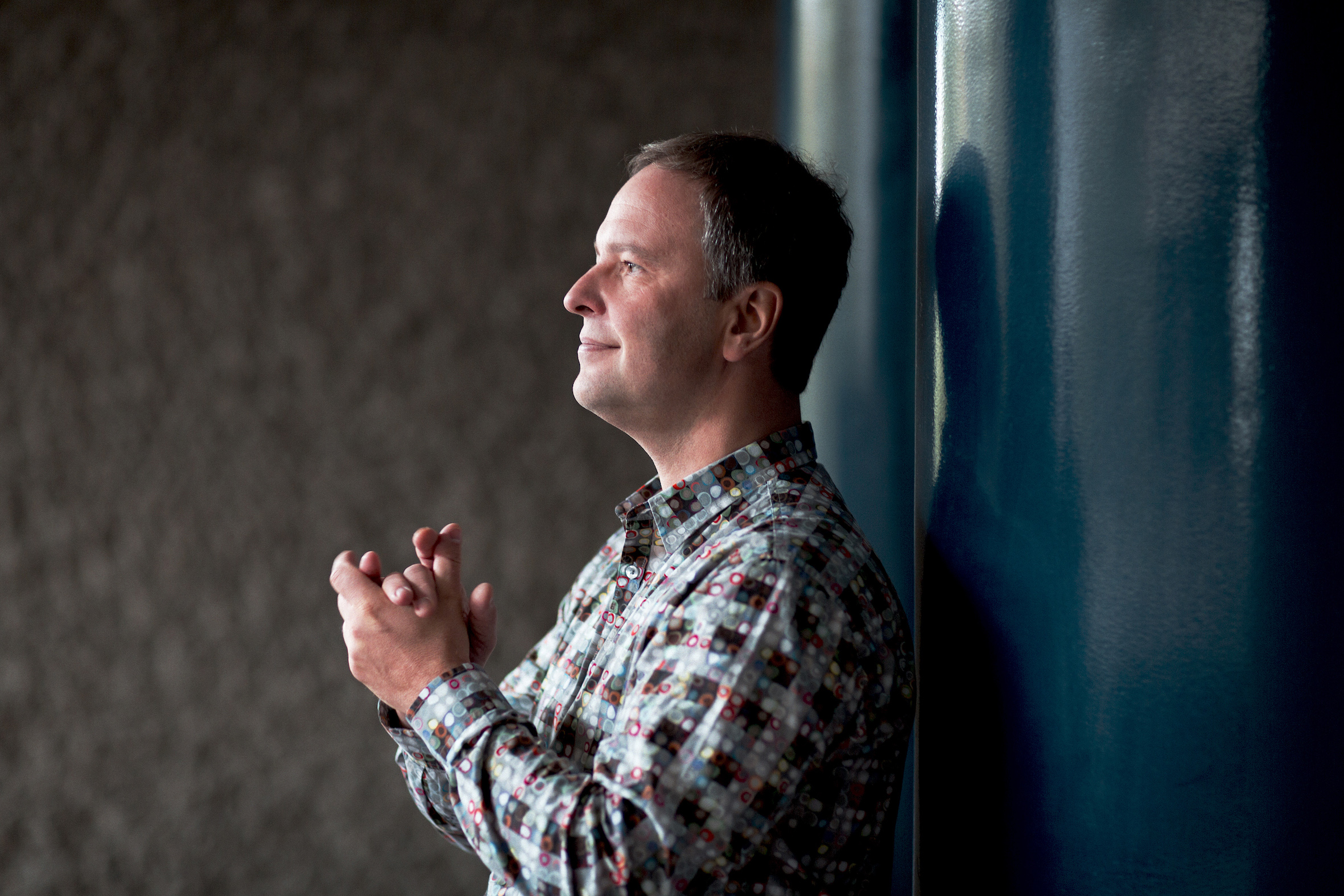Yang, BBCSO, Oramo, Barbican review - roots and refinement | reviews, news & interviews
Yang, BBCSO, Oramo, Barbican review - roots and refinement
Yang, BBCSO, Oramo, Barbican review - roots and refinement
An orchestra under threat plays with power, passion and finesse

In today’s Britain, too many concert reviews have to begin with the vandalistic threats of damage or extinction that hang over their performers. Last week, it emerged that the BBC’s bosses may be open to negotiate an alternative future for its Symphony Orchestra that does not involve 20 per cuts in the personnel.
We shall see: what’s beyond doubt is that Saturday’s programme at the Barbican saw a full-strength BBCSO, under their stalwart champion Sakari Oramo, display an exhilarating level of prowess and flair in every department. Others can, and will, ask why Britain’s national institutions feel compelled to trash their own treasures. For now, let’s enjoy – and defend – what we have.
You could hardly hope for a finer demonstration of all-round musical excellence than the bravura account of Bartók's late, great Concerto for Orchestra that closed the evening’s bill. As a centrepiece, young Korean violinist Inmo Yang – winner of the 2022 Jean Sibelius competition – brought a soulful finesse to Dvořák’s Violin Concerto. We began, though, with a less familiar orchestral showpiece than Bartók's. Grażyna Bacewicz’s Concerto for Large Symphony Orchestra dates from 1962. It belongs to that period in post-war Poland when Penderecki, Lutosławski and their peers managed to nurture avant-garde forms and techniques despite the chilling legacy of Stalinist official aesthetics.
Bacewicz nods both back to Bartók, and sideways to the Penderecki school, as she builds a large-scale canvas – with a battalion-strength on-stage band – from small, almost pointillist, blocks and cells of sound. In the opening scherzo, isolated calls from percussion, pizzicato strings and rippling harps trigger swooping strings – Bacewicz deploys glissandi effects throughout – while lonely keyboard motifs pursue a solitary path. Oramo’s direction caught the accumulating tension between Bacewicz’s detached instrumental units, and the pressure from the massed strings to join forces in some big, affirmative statement.
In the Largo that followed, an eerie nocturne (with shades of Bartok), flutes, clarinets, celeste and glockenspiel issue shards of embryonic melody out of the darkness while the strings again yearn for harmonious integration. Exuberant horns break the glittering string surfaces of the third movement, “Vivo (giocoso)”, while the finale alternates between hushed, single-instrument introspection, vivid exclamations in the brass, and thickening string textures that climax in a striking farewell outburst. Bacewicz (as with the Bartók to come) leaves no place to hide as her fragments and motifs pass from one instrumental desk to another; Oramo drew out the quality that the BBCSO delivers across the board.
Both of the evening’s better-known works take inspiration from – but move beyond – the folk traditions of their composers' homelands: the Czech lands and Hungary/Romania. In the event, Inmo Yang’s rendering of Dvořák’s concerto tended to play down its rustic and vernacular elements. His mellow and refined sound always felt closer to the Prague or Vienna salon than the spit-and-sawdust Bohemian tavern: not a criticism, given the sophisticated architecture of the piece.
 In the opening allegro, he held his own against the orchestra with a rich, rounded tone in the lower register and silvery passagework in the airier melodies. Oramo (pictured above by Benjamin Ealovega) spun a dark, impassioned orchestral tapestry behind Yang while never stealing the soloist’s thunder. Without a break (a transition that apparently turned Joseph Joachim against the piece), we shifted into the romance-like Adagio, where the Korean contender truly showed his mettle. Judicious vibrato and a yearning intensity gave the violin part an almost cello-like warmth and depth: gorgeous, wistful, enveloping. Yang beguiled us with sweetness aplenty, but not schmaltz.
In the opening allegro, he held his own against the orchestra with a rich, rounded tone in the lower register and silvery passagework in the airier melodies. Oramo (pictured above by Benjamin Ealovega) spun a dark, impassioned orchestral tapestry behind Yang while never stealing the soloist’s thunder. Without a break (a transition that apparently turned Joseph Joachim against the piece), we shifted into the romance-like Adagio, where the Korean contender truly showed his mettle. Judicious vibrato and a yearning intensity gave the violin part an almost cello-like warmth and depth: gorgeous, wistful, enveloping. Yang beguiled us with sweetness aplenty, but not schmaltz.
I wondered, in fact, whether the closing allegro, with its incorporation of Czech furiant dance rhythms, sounded a little too refined – even slightly anaemic. True, it should not be a breakneck peasant stomp: Oramo fully respected the “giocoso, ma non troppo” marking. Restrained tempos and Yang’s delicacy gave the ending engaging polish and poise. Maybe it lacked a little fire. An encore, of Guillemain’s Amusement pour le violon seul, confirmed the abundant charm and elegance of the soloist’s style.
Bartók's Concerto for Orchestra, fruit of his final flowering in American exile, made for a blazing climax. From the terrific BBCSO cellos (led by Tim Walden) to muscular horns (Martin Owen) and – standing out for me – the burnished, singing violas (Benjamin Roskams), each section rose to the various challenges set them. Oramo lent a bracing rhythmic momentum to the introduction as it speeds up into a folksy gallop, interspersed with tender pastoral touches in the woodwinds. The droll second movement, with its “game of pairs” as wind duets play around a catchy theme, spotlit the jaunty virtuosity of flutes, bassoons, clarinets and oboes (the latter now led by the outstanding Tom Blomfield).
In the central elegy, the mourning song that rises slowly from the basses was sumptuously carried forwards by the rest of the strings (led by Stephen Bryant). Swooning violas held us spellbound in the lyric loveliness of the fourth movement – with its deflationary comic interlude of a mocking quote from Shostakovich’s “Leningrad” symphony. In the witty, wild finale, Helen Vollam’s trombones added mightily to swagger and strut of the brass, as Oramo pushed the orchestra into a joyous sign-off with infectious verve. The mood held through an encore that should have had us bopping in the aisles: one of Bartók's Romanian folk dances. Surely no sane public culture would plan to mutilate an outfit capable of such life-enhancing artistry. This battle is not over yet.
rating
Share this article
The future of Arts Journalism
You can stop theartsdesk.com closing!
We urgently need financing to survive. Our fundraising drive has thus far raised £49,000 but we need to reach £100,000 or we will be forced to close. Please contribute here: https://gofund.me/c3f6033d
And if you can forward this information to anyone who might assist, we’d be grateful.

Subscribe to theartsdesk.com
Thank you for continuing to read our work on theartsdesk.com. For unlimited access to every article in its entirety, including our archive of more than 15,000 pieces, we're asking for £5 per month or £40 per year. We feel it's a very good deal, and hope you do too.
To take a subscription now simply click here.
And if you're looking for that extra gift for a friend or family member, why not treat them to a theartsdesk.com gift subscription?
more Classical music
 theartsdesk at the Three Choirs Festival - Passion in the Cathedral
Cantatas new and old, slate quarries to Calvary
theartsdesk at the Three Choirs Festival - Passion in the Cathedral
Cantatas new and old, slate quarries to Calvary
 BBC Proms: Estonian Philharmonic Chamber Choir, Kaljuste review - Arvo Pärt 90th birthday tribute
Stillness and contemplation characterise this well sung late-nighter
BBC Proms: Estonian Philharmonic Chamber Choir, Kaljuste review - Arvo Pärt 90th birthday tribute
Stillness and contemplation characterise this well sung late-nighter
 BBC Proms: Kholodenko, BBCNOW, Otaka review - exhilarating Lutosławski, underwhelming Rachmaninov
Polish composers to the fore in veteran conductor’s farewell
BBC Proms: Kholodenko, BBCNOW, Otaka review - exhilarating Lutosławski, underwhelming Rachmaninov
Polish composers to the fore in veteran conductor’s farewell
 theartsdesk at the Pärnu Music Festival 2025 - Arvo Pärt at 90 flanked by lightness and warmth
Paavo Järvi’s Estonian Festival Orchestra still casts its familiar spell
theartsdesk at the Pärnu Music Festival 2025 - Arvo Pärt at 90 flanked by lightness and warmth
Paavo Järvi’s Estonian Festival Orchestra still casts its familiar spell
 BBC Proms: Batsashvili, BBC Scottish Symphony Orchestra, Ryan Wigglesworth review - grief and glory
Subdued Mozart yields to blazing Bruckner
BBC Proms: Batsashvili, BBC Scottish Symphony Orchestra, Ryan Wigglesworth review - grief and glory
Subdued Mozart yields to blazing Bruckner
 Classical CDs: Hens, Hamburg and handmaids
An unsung French conductor boxed up, plus Argentinian string quartets and baroque keyboard music
Classical CDs: Hens, Hamburg and handmaids
An unsung French conductor boxed up, plus Argentinian string quartets and baroque keyboard music
 BBC Proms: McCarthy, Bournemouth SO, Wigglesworth review - spring-heeled variety
A Ravel concerto and a Walton symphony with depth but huge entertainment value
BBC Proms: McCarthy, Bournemouth SO, Wigglesworth review - spring-heeled variety
A Ravel concerto and a Walton symphony with depth but huge entertainment value
 BBC Proms: First Night, Batiashvili, BBCSO, Oramo review - glorious Vaughan Williams
Spirited festival opener is crowned with little-heard choral epic
BBC Proms: First Night, Batiashvili, BBCSO, Oramo review - glorious Vaughan Williams
Spirited festival opener is crowned with little-heard choral epic
 Interview: Quinteto Astor Piazzolla on playing in London and why Mick Jagger's a fan
Music Director Julián Vat and pianist Matias Feigin compare notes on Piazzolla
Interview: Quinteto Astor Piazzolla on playing in London and why Mick Jagger's a fan
Music Director Julián Vat and pianist Matias Feigin compare notes on Piazzolla
 Classical CDs: Bells, birdsong and braggadocio
British contemporary music, percussive piano concertos and a talented baritone sings Mozart
Classical CDs: Bells, birdsong and braggadocio
British contemporary music, percussive piano concertos and a talented baritone sings Mozart
 Siglo de Oro, Wigmore Hall review - electronic Lamentations and Trojan tragedy
Committed and intense performance of a newly-commissioned oratorio
Siglo de Oro, Wigmore Hall review - electronic Lamentations and Trojan tragedy
Committed and intense performance of a newly-commissioned oratorio

Add comment